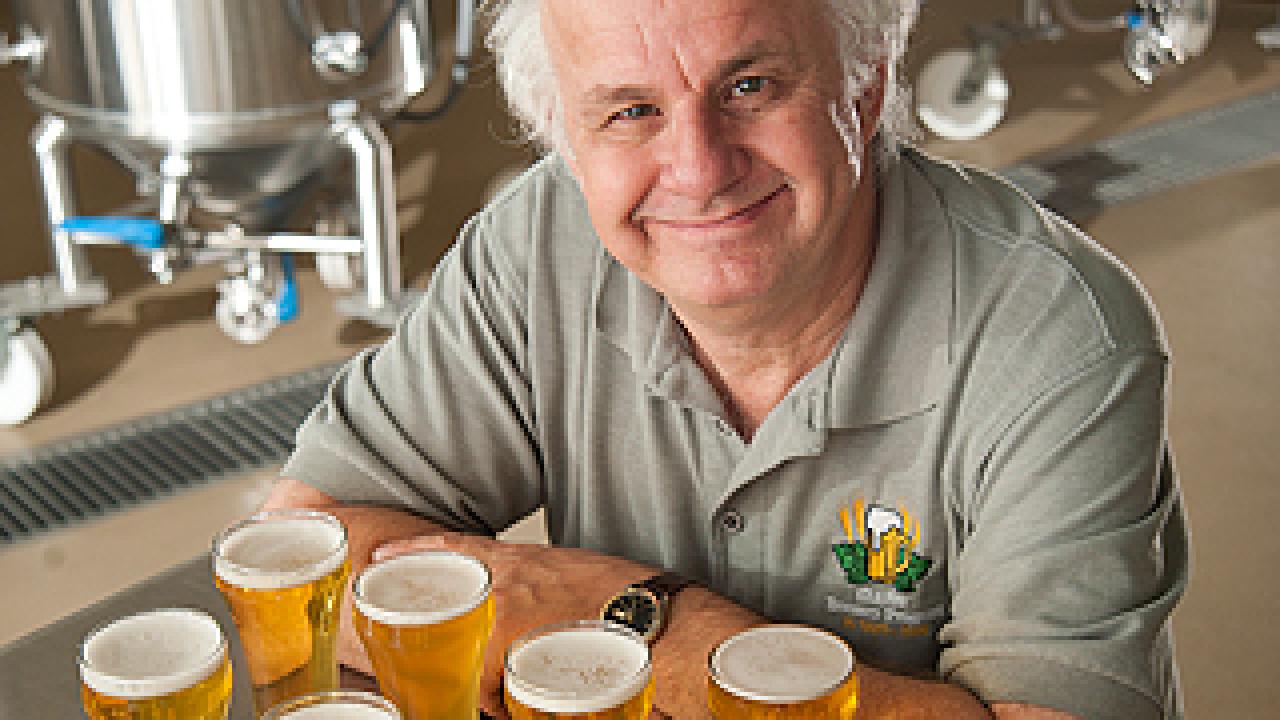Foam capping a glass of beer is not just a frothy byproduct of the brewing process but a key component of beer quality and consumer satisfaction, writes highly acclaimed brewing scientist Charles Bamforth of the University of California, Davis, in a new book, “Foam.”
“Foam,” published by the American Society for Brewing Chemists, is the first in what Bamforth plans as a six-volume series. “The Practical Guides for Beer Quality” series is intended to help brewers, retailers and consumers ensure excellence in their beer.
Foam, notes Bamforth, is of utmost importance to beer quality when the beverage is consumed from a glass, rather than from a can or bottle.
“Despite my frequent protestations that the only civilized way to sip beer is from a glass, I am prepared to admit that there are drinking occasions when the informal approach is relevant — when fishing, for example,” Bamforth writes. “I do not fish,” he adds.
Bamforth goes on to share research findings from several consumer perception studies on beer foam conducted in California, England, Japan, Germany, Belgium, Finland, Ireland, Scotland and the Czech Republic. Findings from those studies include:
- U.S. consumers favor a good head of foam on their beer;
- Most beer drinkers don’t like excessive foam;
- Many consumers find that foam makes beer look colder; and
- Men tend to appreciate foam more than women.
Throughout the remainder of the 72-page, paperback book, Bamforth examines the more technical aspects of beer foam. These include physical and chemical factors of foaming; the impact of raw materials, processing and dispensing on foaming; measuring foam; and how to address foaming problems.
“Anyone who wants to know how to pour the perfect pint will find the answers here,” Bamforth says.
The book also includes a discussion of “gushing,” that sudden, uncontrolled release of foam when the beer can or bottle is opened. Bamforth advises that “beer does not take well to shaking,” and dispels the myth that gushing can be prevented by simply allowing the beer to stand and settle.
The new book is available for $39.95 from the American Society for Brewing Chemists’ online store at http://www.asbcnet.org/.
Bamforth, who is the Anheuser-Busch Endowed Professor of Malting and Brewing Sciences, began his work in the brewing industry in 1978.
In 1999, he joined the faculty at UC Davis, where the brewing science program is the oldest and most acclaimed of its kind in the United States. It has been an integral component of the UC Davis Department of Food Science and Technology since 1958, graduating hundreds of students who have gone on to careers in the brewing and brewing-supply industries throughout North America and beyond.
Before coming to UC Davis, Bamforth was the deputy director-general of Brewing Research International and research manager and quality assurance manager of Bass Brewers.
In addition to his faculty appointment at UC Davis, Bamforth also serves as a special professor in the School of Biosciences at the University of Nottingham, England, and is a fellow of the Institute of Brewing and Distilling, the Society of Biology, and the International Academy of Food Science and Technology. And he is editor-in-chief of the Journal of the American Society of Brewing Chemists.
He has written numerous books on beer and brewing including “Beer Is Proof God Loves Us,” published in 2010.
More information on Bamforth’s books is available at: http://foodscience.ucdavis.edu/bamforth/BookLinks.html.
Media Resources
Pat Bailey, Research news (emphasis: agricultural and nutritional sciences, and veterinary medicine), 530-219-9640, pjbailey@ucdavis.edu
Charlie Bamforth, Food Science and Technology, 530-752-9476, cwbamforth@ucdavis.edu
